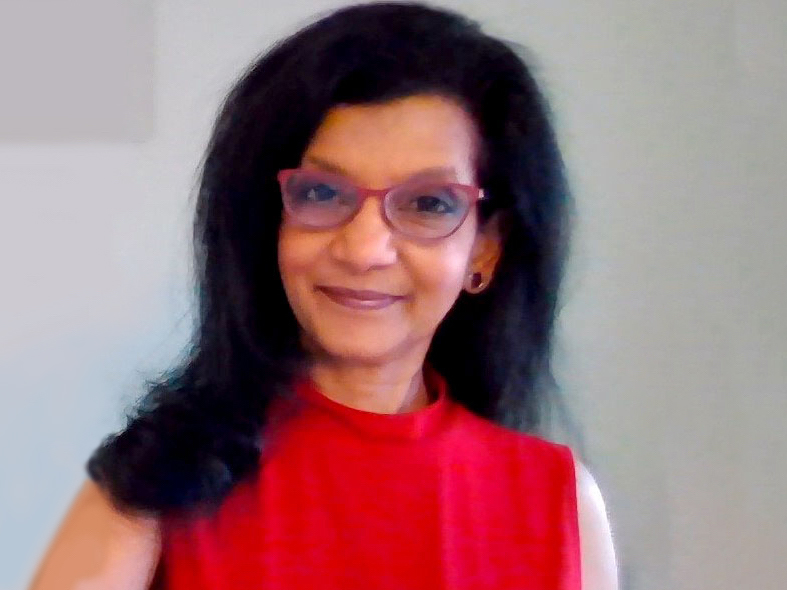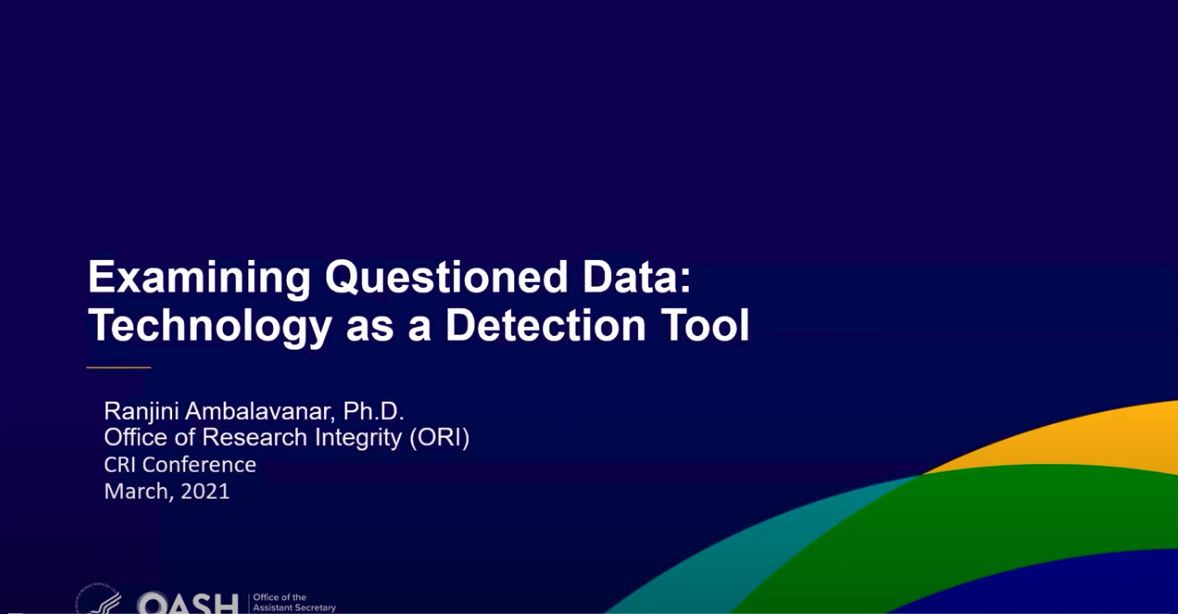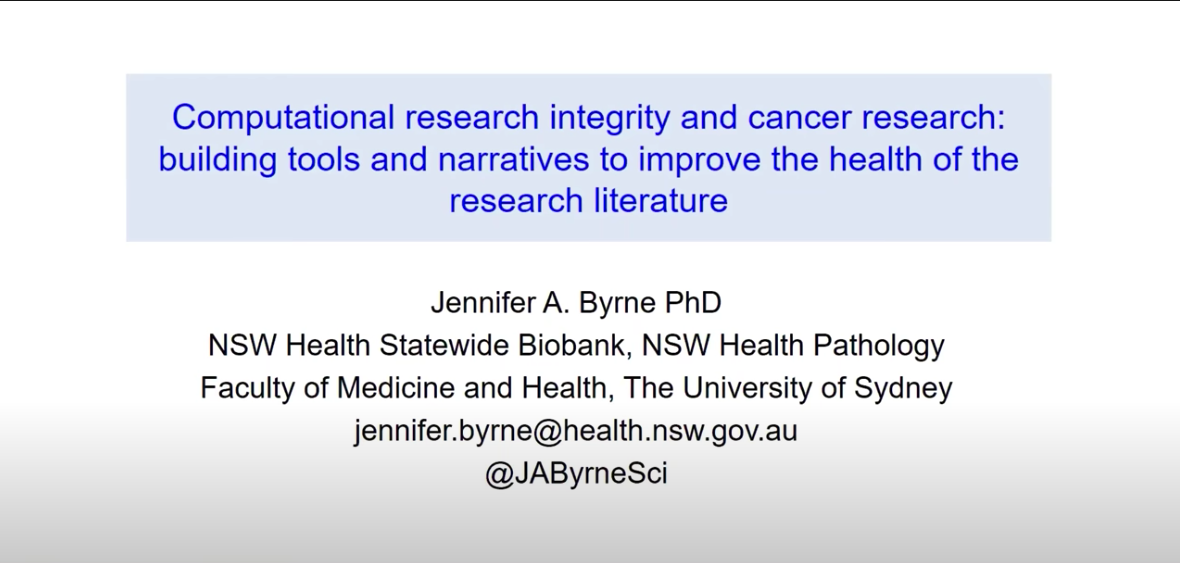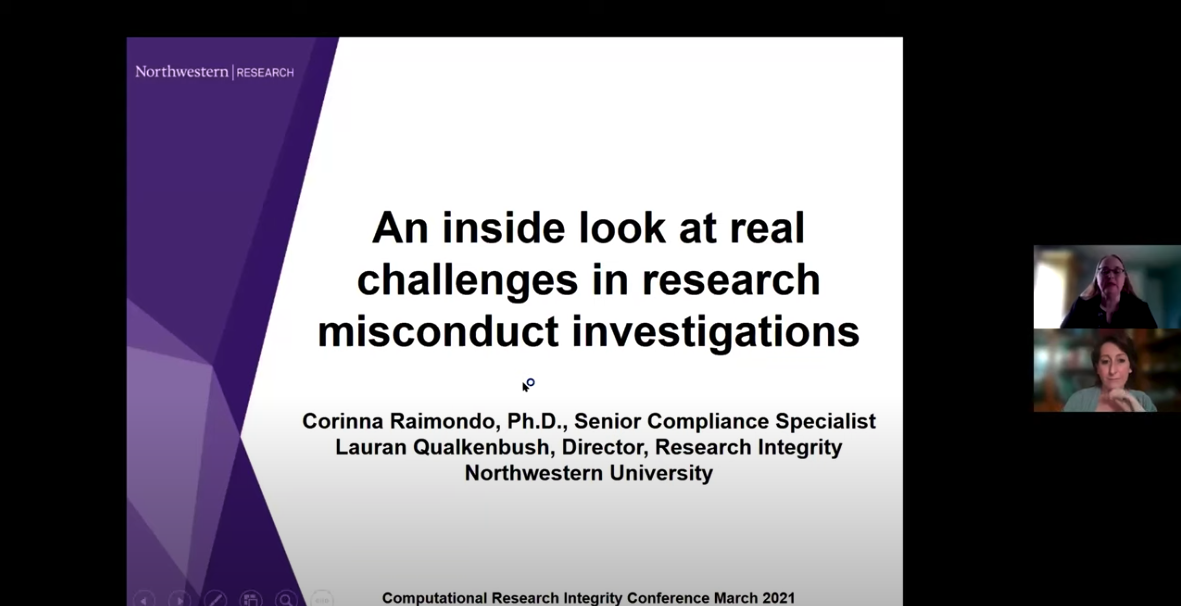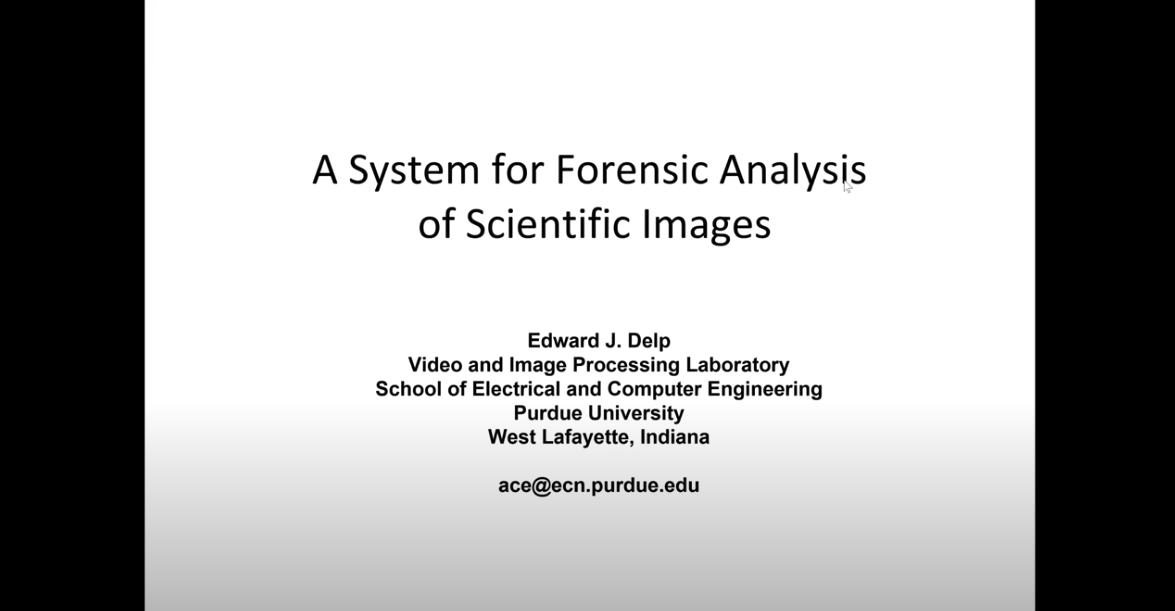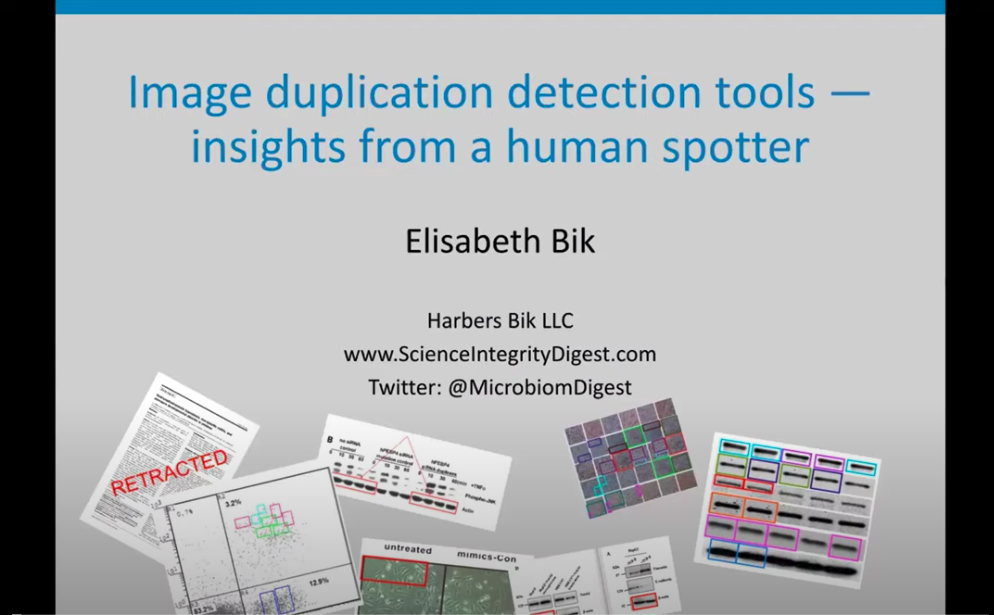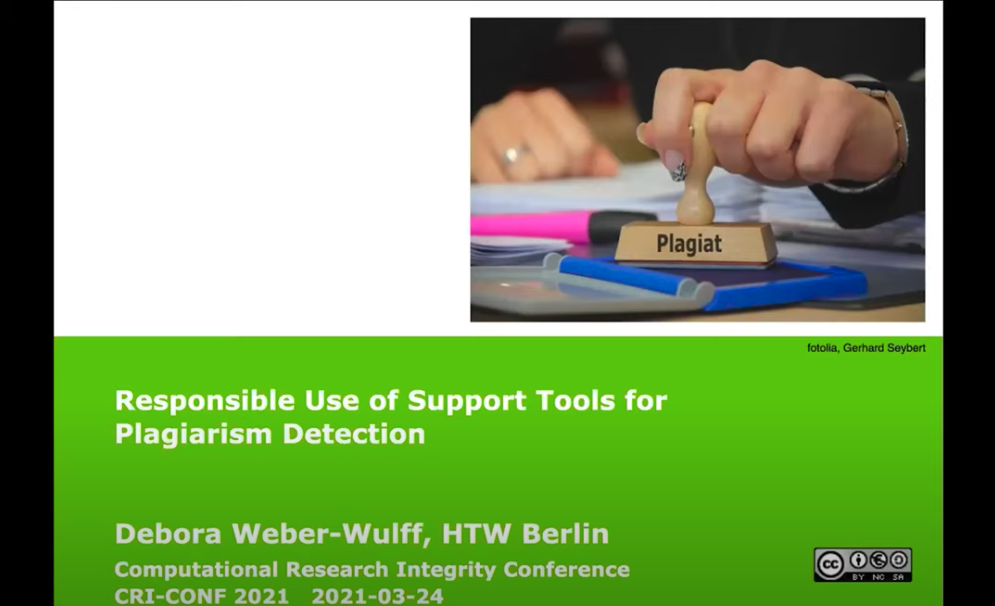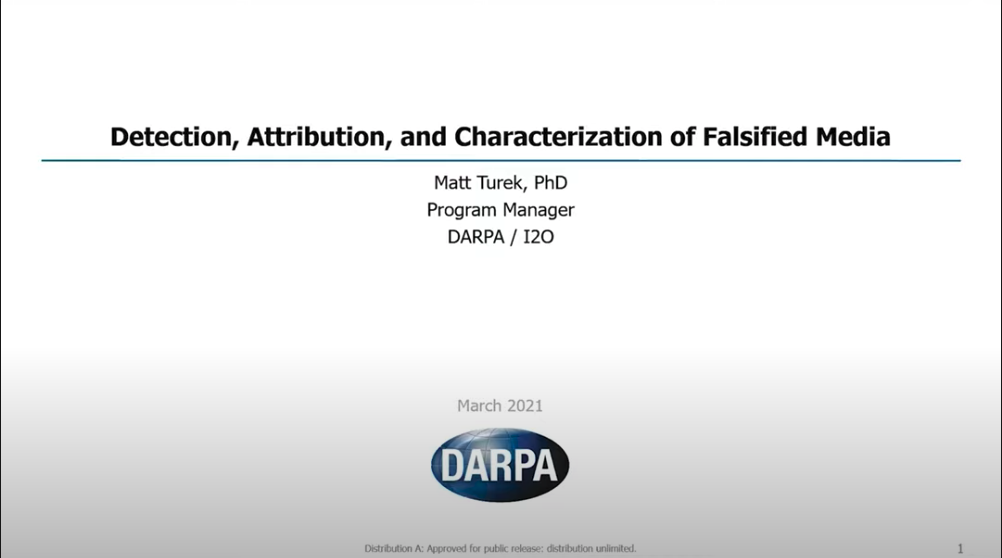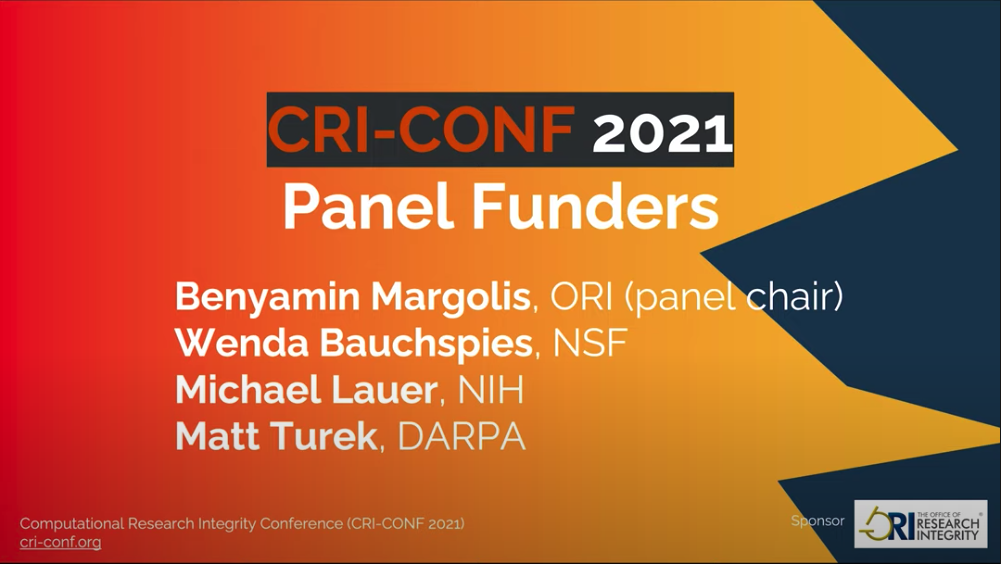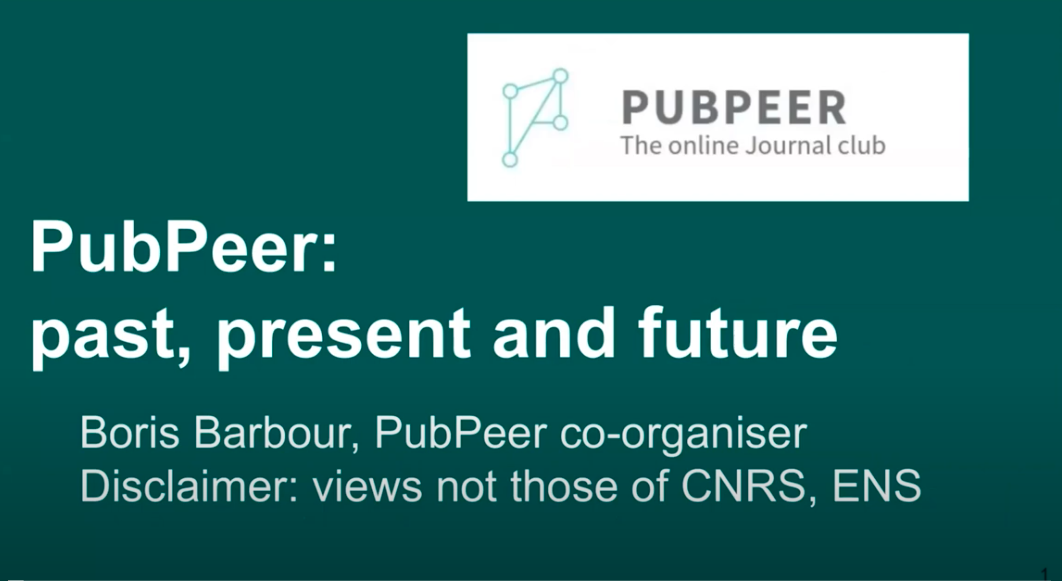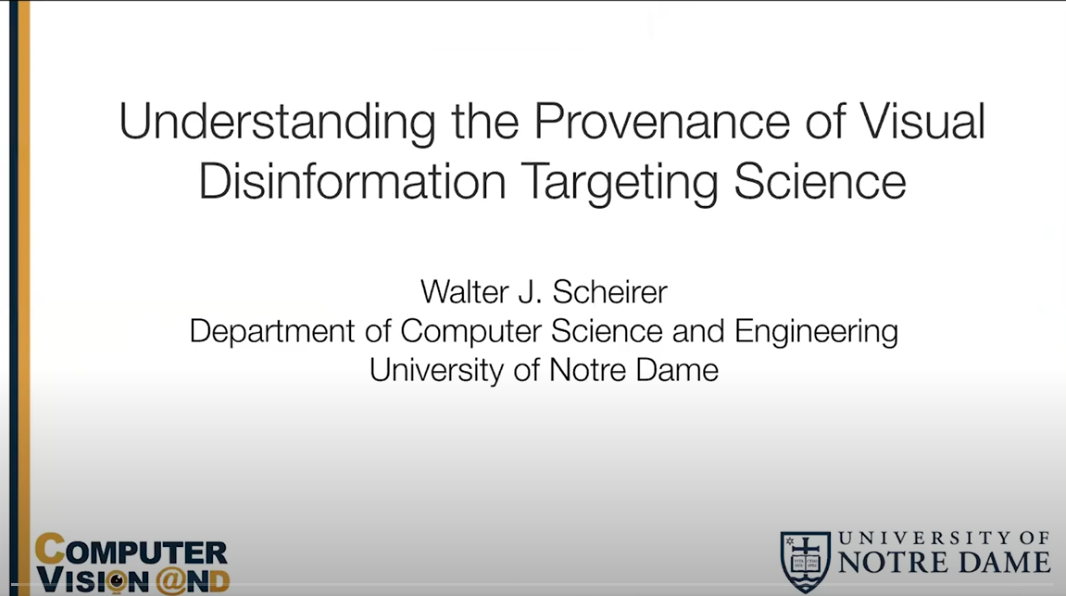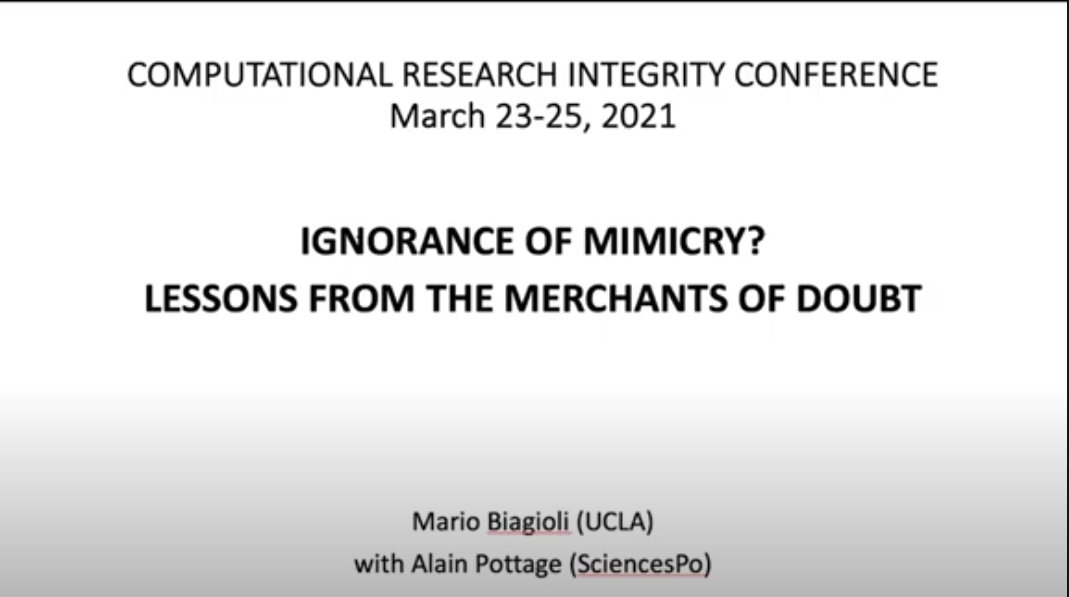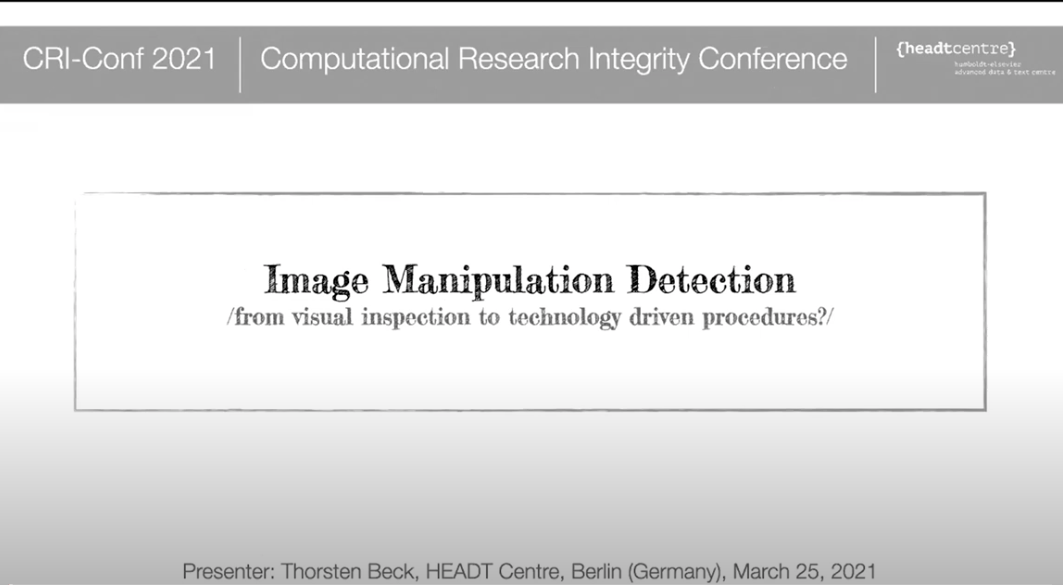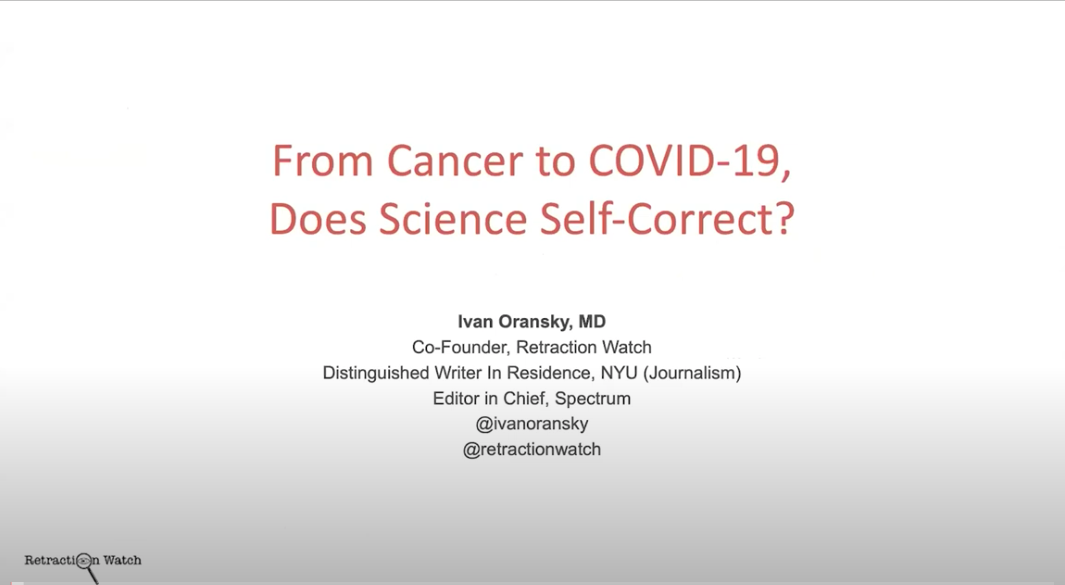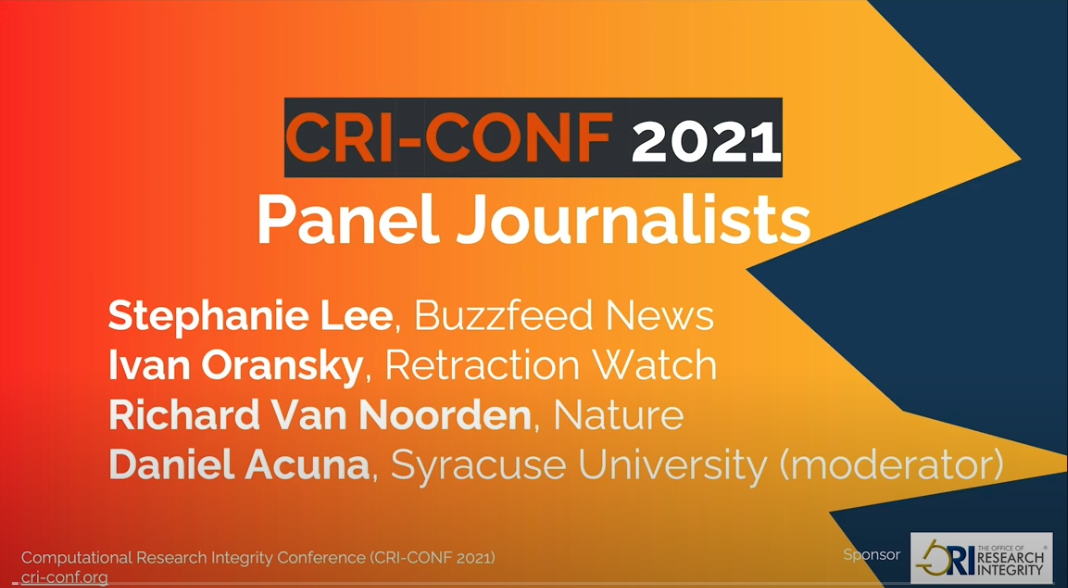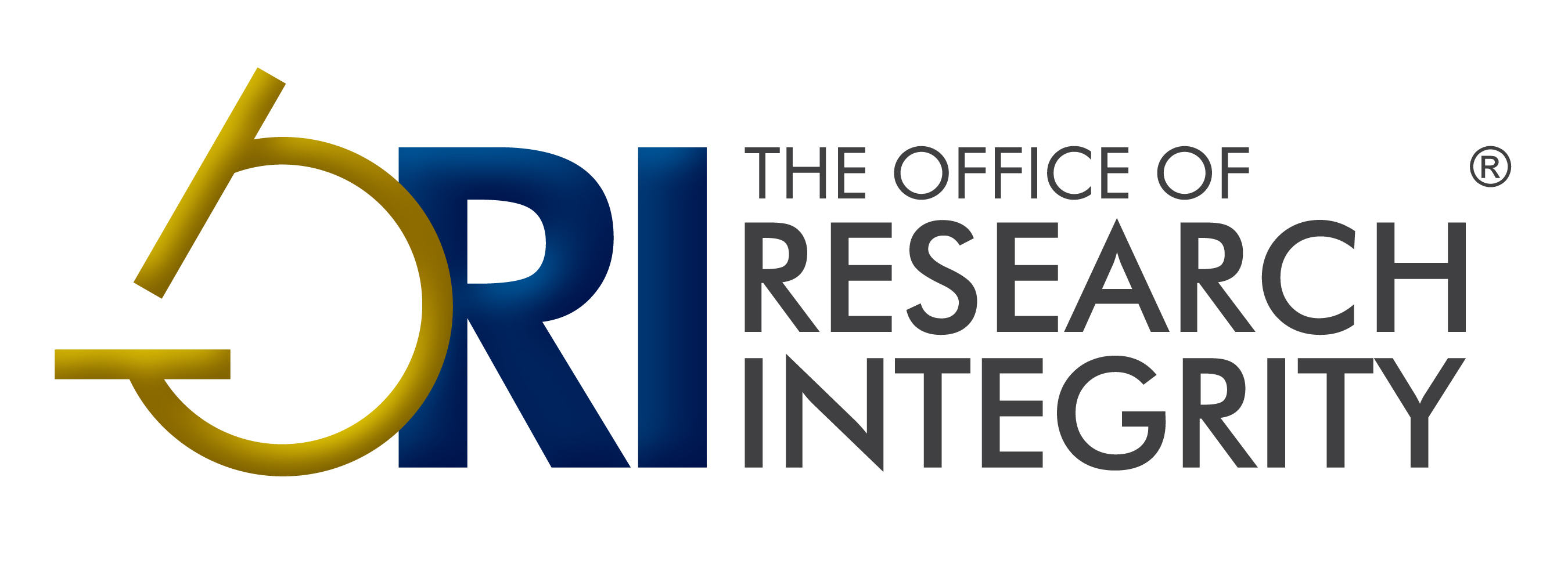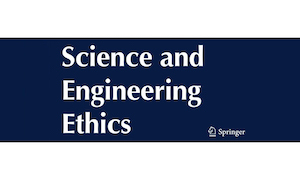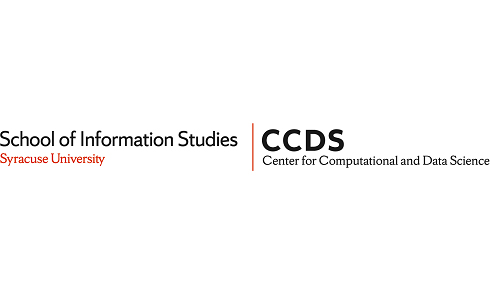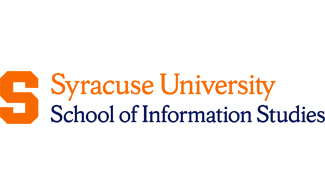About the Computational Research Integrity Conference (CRI-CONF)
This conference will bring researchers from Biomedical Sciences and Ethics as well as Computer Scientists, AI researchers, and statisticians to discuss how research integrity investigations can be made faster, more accurate, and systematic with the use of computational methods
Any of the following topics will be discussed in this conference:
- Computational or best-practices methods for detecting fabrication, falsification, or plagiarism of text, images, statistics, or other research outcomes
- The role of research integrity offices at the institutional (e.g., ARIO member) and funders' levels (e.g., ORI)
- The role of publishers and whistleblowers' websites (e.g., PubPeer)
- Ethical dimensions of automating research integrity
- Case studies
- Any other research broadly related to non-computational or computational research integrity
Where
Online
When
Tuesday to Thursday
23-25 March, 2021
Invited Speakers
(in alphabetical order)

Daniel Acuna (organizer)
Syracuse University
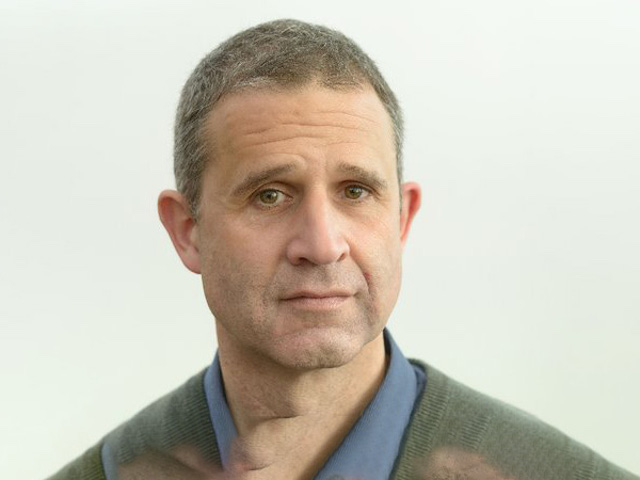
Boris Barbour
The PubPeer Foundation
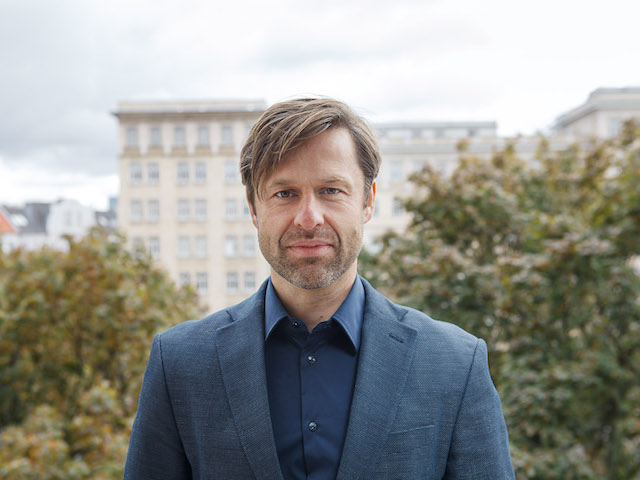
Thorsten Beck
HEADT Centre - Humboldt University of Berlin
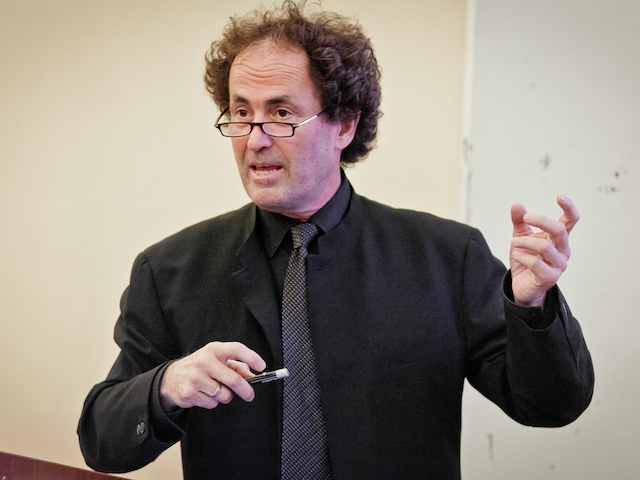
Mario Biagioli
UCLA

Elisabeth Bik
Harbers-Bik LLC

Jennifer Byrne
The University of Sydney

Edward J. Delp
Purdue University
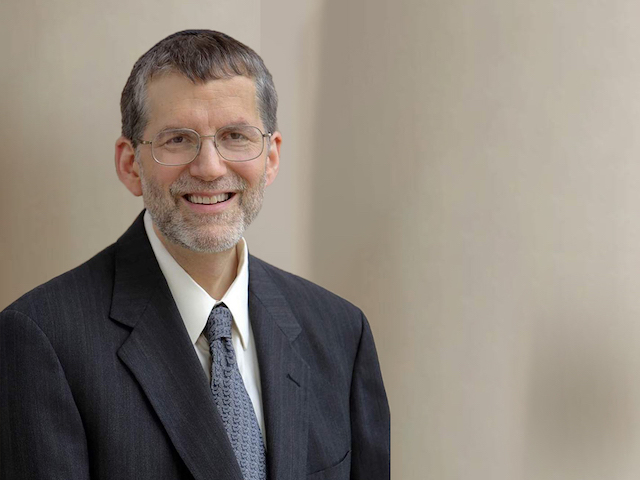
Michael Lauer
NIH

Ivan Oransky
Retraction Watch
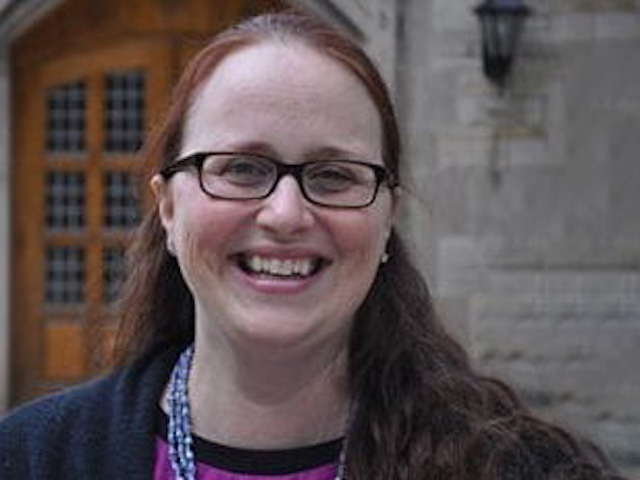
Lauran Qualkenbush
Northwestern University

Corinna Raimondo
Northwestern University
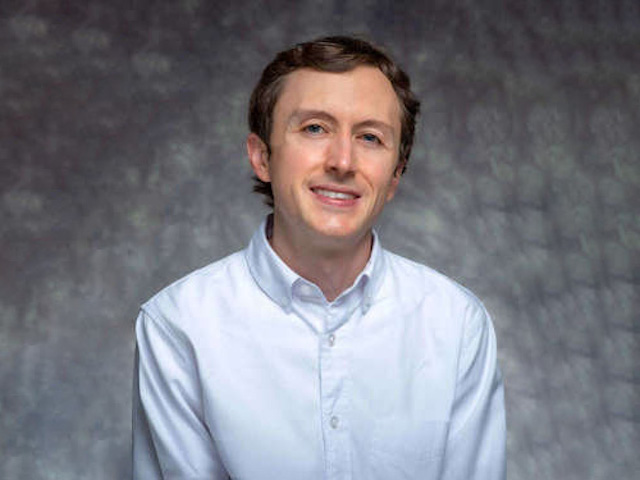
Walter Scheirer
University of Notre Dame
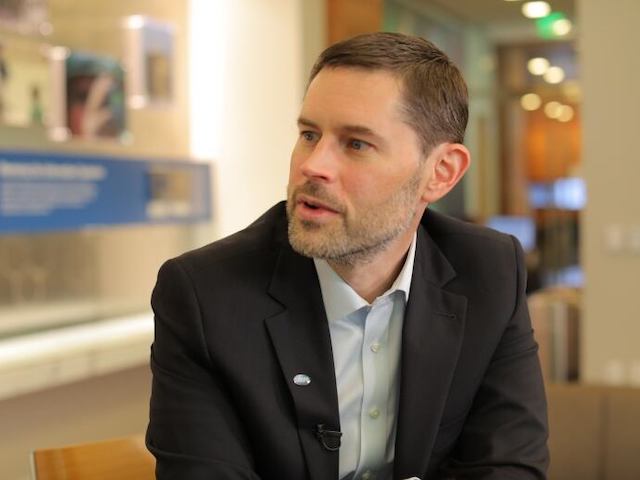
Matthew Turek
DARPA

Debora Weber-Wulff
HTW Berlin - University of Applied Sciences
Panelists
(in alphabetical order)
IJsbrand Jan Aalbersberg (Scopus), Wenda Bauchspies (NSF), Erica Boxheimer (EMBO Press), Paul Brookes (University of Rochester), Jana Christopher (FEBS Press; Image-Integrity), James Heathers (Cipher Skin), Renee Hoch (PLOS), Wanda Jones (ORI), Stephanie Lee (Buzzfeed News), Benyamin Margolis (ORI), Bernd Pulverer (EMBO), Maria Kowalczuk (Springer Nature), Amit K. Roy-Chowdhury (UC Riverside), William C. Trenkle (USDA), Richard Van Noorden (Nature), Wouter Vandevelde (KU Leuven), Mary Walsh (Harvard University)
Event Schedule
The current event schedule is subject to changes
All times in New York, US time.
Welcome & remarks
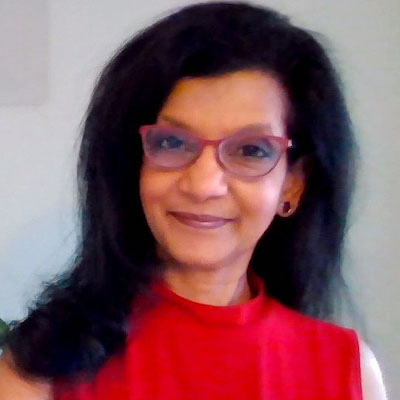
Speaker Ranjini Ambalavanar, ORI
Examining Questioned Data: Technology as a Detection Tool

Speaker Jennifer Byrne, The University of Sydney
Computational research integrity and cancer research: building tools and narratives to improve the health of the research literature
Break

Speakers Lauran Qualkenbush & Corinna Raimondo, Northwestern University
An inside look at real challenges in research misconduct investigations
Social activity: breakout rooms
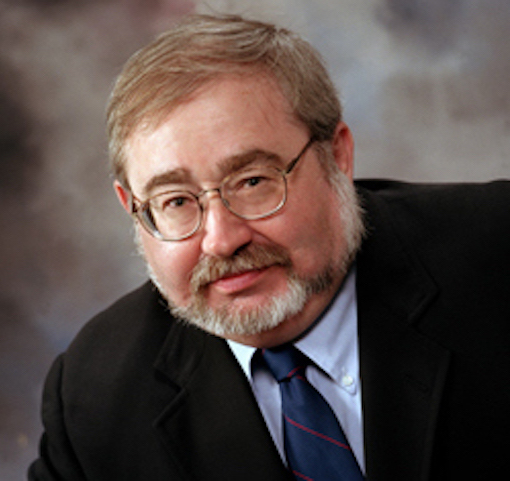
Speaker Edward J. Delp, Purdue University
A System for Forensic Analysis of Scientific Images
Panel Institutional investigators
- Wanda Jones, ORI (panel chair)
- William C. Trenkle, USDA
- Wouter Vandevelde, KU Leuven
- Mary Walsh, Harvard University
Break
Panel Publishers
- Bernd Pulverer, EMBO (panel chair)
- Renee Hoch, PLOS
- IJsbrand Jan Aalbersberg, Scopus
- Maria Kowalczuk, Springer Nature
Social event: breakout rooms
Remarks
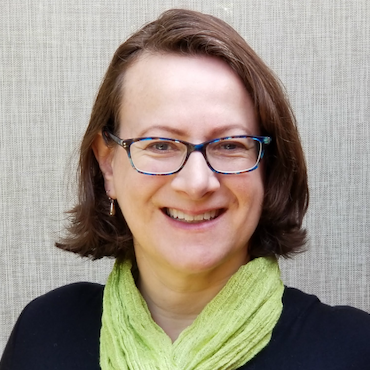
Speaker Elisabeth Bik, Harbers-Bik LLC
Image duplication detection tools — insights from a human spotter

Speaker Debora Weber-Wulff, HTW Berlin - University of Applied Sciences
Responsible Use of Support Tools for Plagiarism Detection
Break
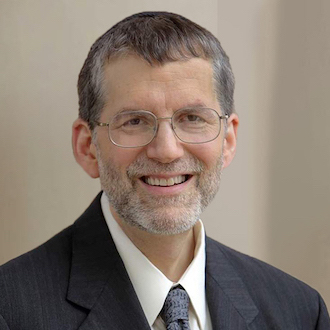
Speaker Michael Lauer, NIH
Roles and Responsibilities for Promoting Research Integrity
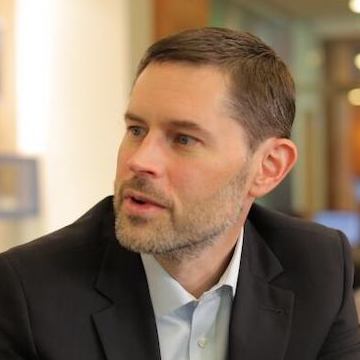
Speaker Matt Turek, DARPA
Challenges and Approaches to Media Integrity
Competition launch
Break
Break
Closing remarks
Remarks

Speaker Boris Barbour, The PubPeer Foundation
PubPeer, past, present and future

Speaker Walter Scheirer, University of Notre Dame
Understanding the Provenance of Visual Disinformation Targeting Science
Break

Speaker Mario Biagioli, UCLA
Ignorance or mimicry? Lessons from the merchants of doubt
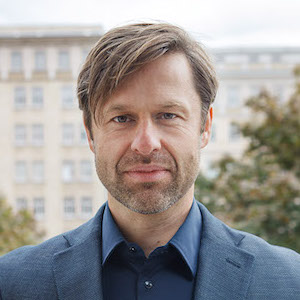
Speaker Thorsten Beck, HEADT Centre - Humboldt University of Berlin
Image Manipulation Detection — From Visual Inspection to Technology Driven Procedures?

Speaker Ivan Oransky, Retraction Watch
From Cancer to COVID-19, Does Science Self-Correct?
Break
Break
Open discussion and next steps
Participate
Registration
The registration fee is $40 and includes access to all sessions.
Eligibility: The registration is open for researchers, funders, research integrity investigators, and senior leadership who have broad interests in research integrity.
The organizers reserve the right to review registrations for eligibility and decline and refund the registration of those who do not meet the eligibility criteria.
